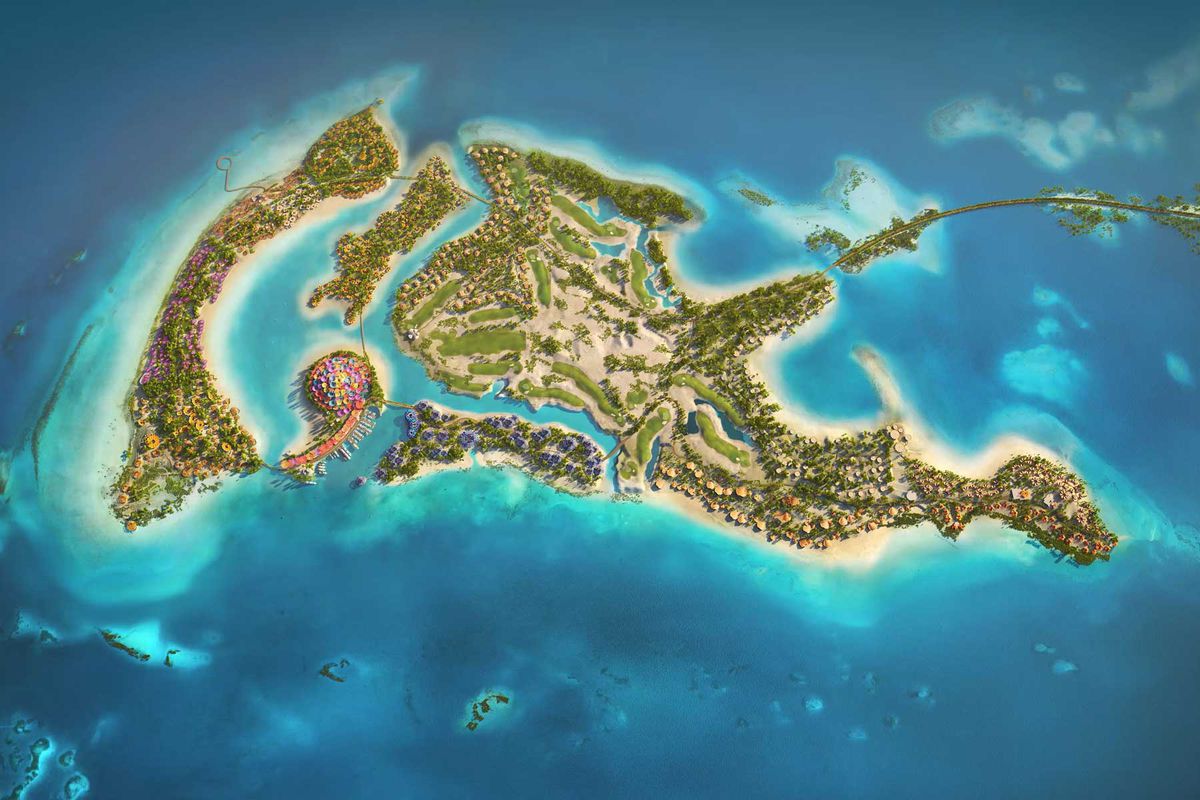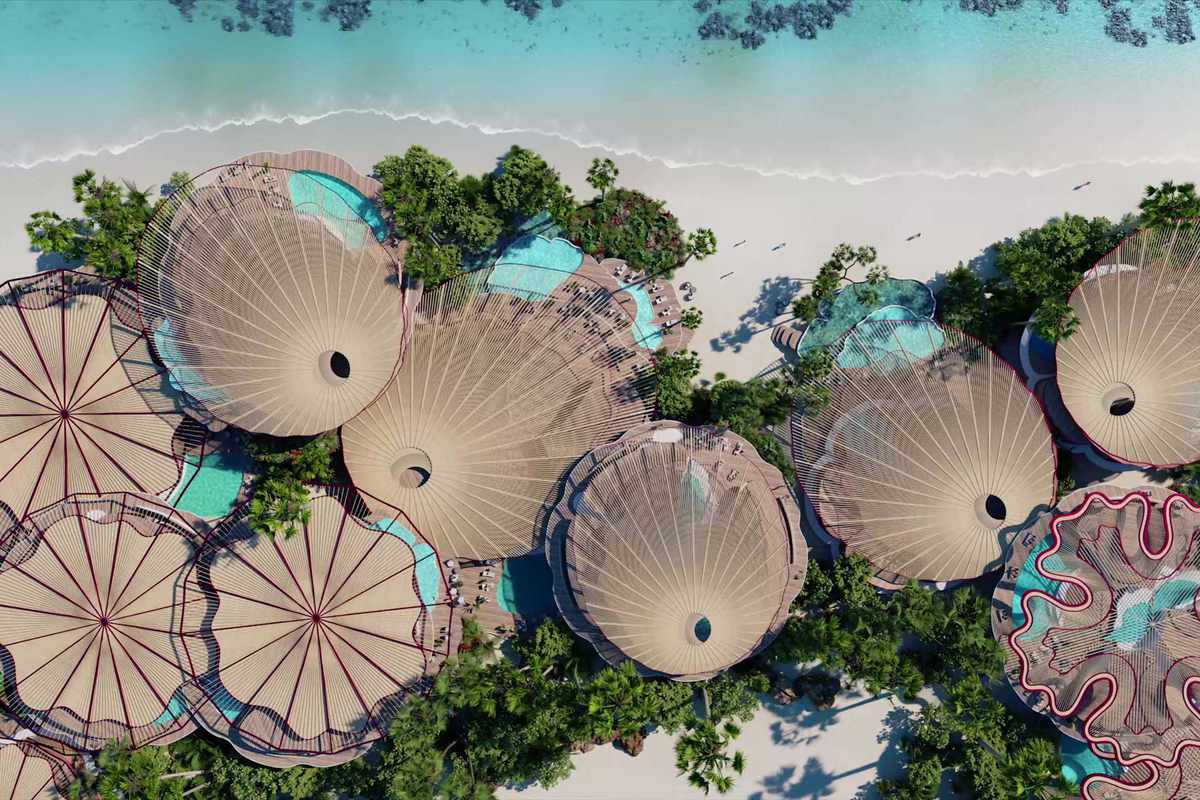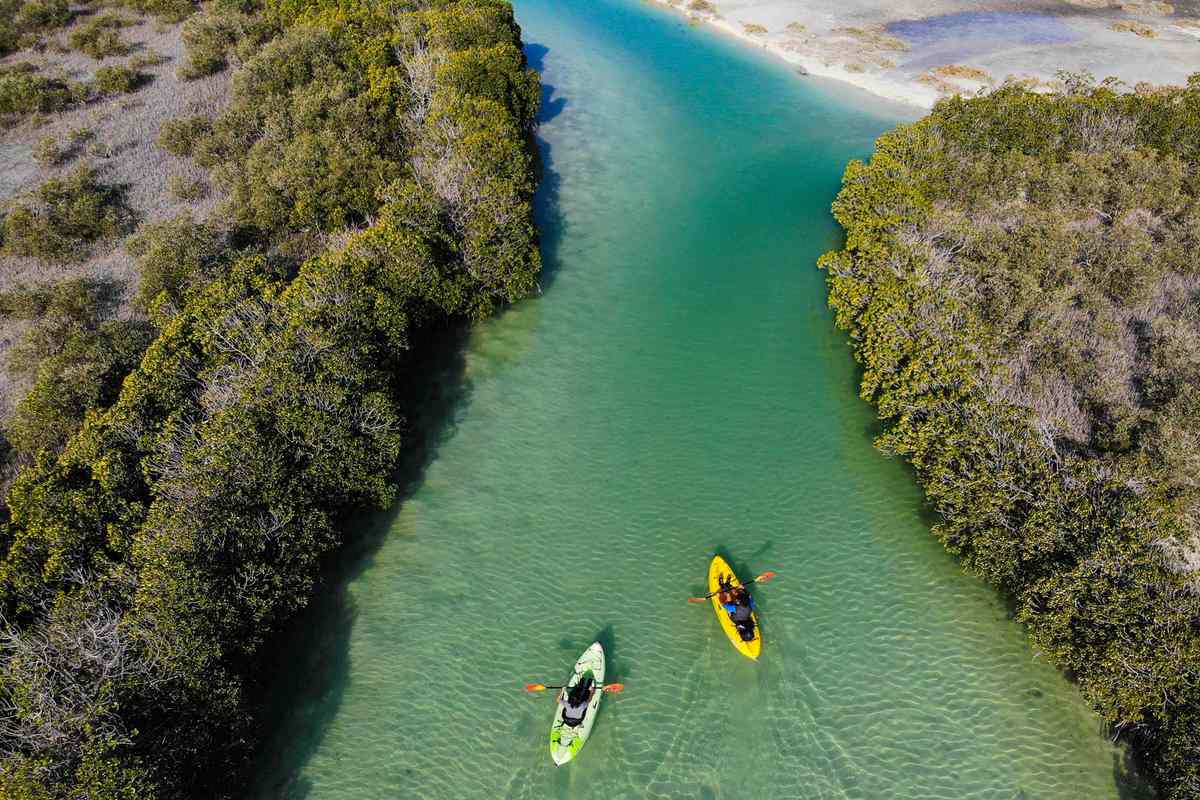This Jaw-dropping Archipelago Is Set to Open in 2022 With Stunning Beaches, Desert Dunes, and Volcanoes
The Red Sea Project, a multi-island resort development in Saudi Arabia, is proposing a step forward for sustainable hospitality.
A new "giga resort" is aiming to put Saudi Arabia back on luxury travelers' radars. Comprising 50 hotels — the first of which will open in 2022 — across an archipelago roughly the size of Belgium, The Red Sea Project is set to be the world's largest destination powered solely by renewable energy. With plans to achieve a 30% net conservation benefit by 2040, it doesn't just want to preserve the local environment, it also seeks to enhance it.

Credit: Courtesy of The Red Sea Development Company:
It's an ambitious goal for a project of this size. When fully completed in 2030, The Red Sea Project will boast 8,000 hotel rooms, 1,300 residential properties, and amenities across 22 islands. Energy will be generated from solar panels and wind turbines, fed into what will be the world's largest battery storage facility. This is just one of Saudi Arabia's many "giga" developments supported by the Vision 2030 program, an initiative designed to boost tourism and diversify the economy away from oil dependency.
As pioneering as it sounds, only 1% of the 17,400-square-mile expanse will be developed. With white-sand beaches, sweeping desert dunes, dormant volcanoes, mountain ranges, and the world's fourth-largest barrier reef system, the archipelago is a natural draw for outdoor enthusiasts. The project's lofty conservation efforts, ranging from exploring 3D-printed coral technologies to carbon-sequestering marine algae farms and mechanical trees, aim to keep it that way.

Credit: Courtesy of The Red Sea Development Company:
"We are acutely aware of our responsibility to protect this pristine environment and adopted stringent measures from the very beginning," says John Pagano, CEO of The Red Sea Development Company. "Careful selection of areas for development is one of the key ways in which we will achieve this. We're leaving 75% of our island archipelago untouched and designating nine islands as special conversation zones."
Part of the conservation effort focuses on the endangered green and hawksbill turtle species that are native to the area. The project has partnered with the King Abdullah University of Science and Technology to launch a turtle tagging program and implant sensors in coral reefs, lagoons, and nesting sites to monitor these habitats. A marine spatial planning exercise was also done to map out the lowest impact areas for development, says Pagano.

Credit: Courtesy of The Red Sea Development Company:
Eco-conscious practices will also be incorporated into the construction methods. Prefabricated modular elements are being manufactured off-site to minimize waste and disruption to fragile ecosystems, and the use of materials like green concrete, made with fewer resources, will be prioritized. Last month, London-based architectural firm Foster + Partners, which also designed the new Red Sea International Airport, unveiled their vision for part of phase one of the project: the Coral Bloom. The futuristic development on the gateway island of Shurayrah will encompass 11 hotels that will begin welcoming guests in late 2022.

Credit: Courtesy of The Red Sea Development Company:
"Coral reefs, by nature, are made of several different elements, but they come together to read as a singular entity. This was the inspiration for our master plan, where each of the resorts offers a different experience and appeals to a varied audience, but the entire island embodies a collective identity as Coral Bloom," says Gerard Evenden, head of studio at Foster + Partners.
Deriving inspiration from not only nature, but also the historical basket-weaving traditions of the region, the project aims to create earthy, low-carbon buildings with plenty of airy spaces to suit traveler preferences post-COVID-19. To prevent overtourism, the number of guests will be limited to one million each year, and this total will be carefully managed to ensure an even distribution, says Pagano.
Before the pandemic, tourism was growing steadily in Saudi Arabia, with the kingdom announcing the launch of its e-visa program in 2019 and providing 50 countries new access to the nation. If all goes according to plan, a project like the Coral Bloom could quickly put Saudi Arabia on the tourism map, especially if it grants travelers access to all the space and protected nature it promises.
Related Posts
By accepting you will be accessing a service provided by a third-party external to https://oc3anclub.com/

